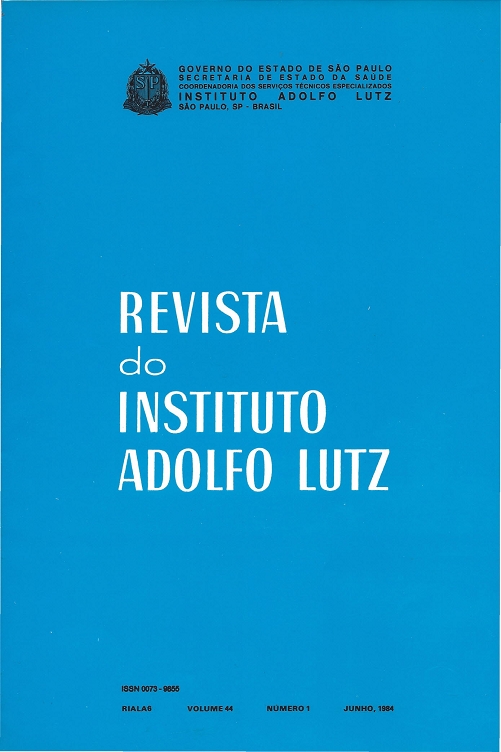Resumo
Foi isolada nova linhagem celular de rim de vitelo, a qual vem sendo cultivada há mais de 3 anos. Os testes de susceptibilidade celular frente aos vírus do herpes simples (Herpervirus hominis) tipo 1, sarampo, vacín ia, rubéola, vírus da estomatite vesicular, varíola bovina, poliovírus tipo 1, vírus Ilhéus, e o teste da sensibilidade, comparada com a de outras culturas celulares, tais como Vero, HEp2' Av" BHK-21 e RC-IAL, revelam que a cultura RV -IAL pode ser utilizada para estudos virológicos em seres humanos e em animais, e nas pesquisas com interferon. Morfologicamente esta linhagem tem aparência fibroblástica com discretas alterações, desde o início do cultivo. O maior índice de multiplicação foi obtido entre os 4.° e 6.° dias de crescimento. Análises cromossômicas feitas entre as passagens 50-55 indicam que esta linhagem, inicialmente diplóide, tornou-se heteroplóide.
Referências
KENBEECK, A. & SCHOENAERS, P. Susceptibility of various celI !ines to the
cytopa thic effect of a strain of bovine papular stomatitis virus. Ann. Med. Vet.,
123:333-8, 1979.
2. BRION, G. & GRUEST, J. - Isolement et amintien in »itro d'une souche essentiellement constitués de cellules épithéliales et obtenue a partir d'une rein de bovídé, Ann. Inst. Pasteur (Paris), 92 :426-9, 1957.
3. CORIA, M. F. - CeU cultures of bovine embryonic skin: growth and characterization. Am. J. Vet. Res., 30: 369-75, 1969.
4. EAGLE, H. - Amino acid metabolism in mammalian cell cultures. Science (Wash.),
130:432-7, 1959.
5. FERRIS, R. D. & PLOWRIGHT, W. - The serial cultivation of calf kidney cells for use in virus ressarch. Res. Vet . Sci., 2: 387-95, 1961.
6. KIMURA, S.; FUKUI, K.; YOSHIDA, N. & MATSUBARA, Y. - A new cell !ine of calf kidney and its susceptibility to viruses. Jap. J. Miorobiol., 12:293-8, 1968.
7. LENNETTE, E. H. & SCHMIDT, N. J., ed. - Diagnostie proceduree 101' viral. ricket-
tsial and chlamydial inf ections . 5.ª ed. Washington, D. C., APHA,. c1979. 1138 p.
8. MADIN, S. H. & DARBY, N. B., Jr. Established kidney cell lines of normal adult bovine and ovine origino Proc, Soc. exp, Biol. M ed., 98: 574-6, 1958.
9. PAUL, J. R. -- Cell and tissue culture. 5th ed. Edinburg, Churchill Livinstone, 1975.
484 p.
10. ROSSI, C. R. & KIESEL, G. K. - Establishment of the AU-BEK cell line and comp-
arison with two other bovine cell lines. In vitro (Rockville), 9:147-55, 1973.
11. TJIO, J. H. & PUCK, T. T. -- Genetics of somatic mammalian cells. lI. Chromosso-
mal constitution of cells in tissue culture. J. exp. Med., 108:259-68, 1958.
12. WARREN, J. & CUTCHINS, E. C. - General characteristics and viral susceptibility
of bovina embryonic tissue cultures. Virology, 4:297-304, 1957.

Este trabalho está licenciado sob uma licença Creative Commons Attribution 4.0 International License.
Copyright (c) 1984 Áurea S. Cruz, Mary E. Sakuma, Clélia H. Martinez
